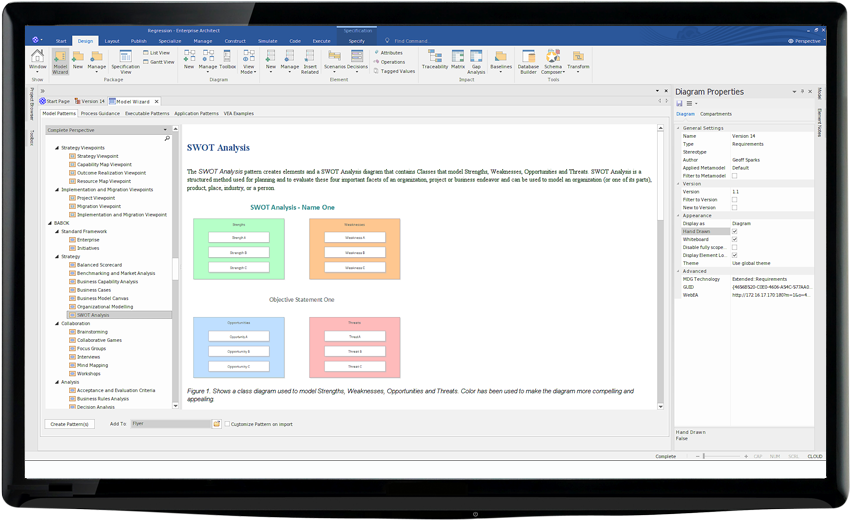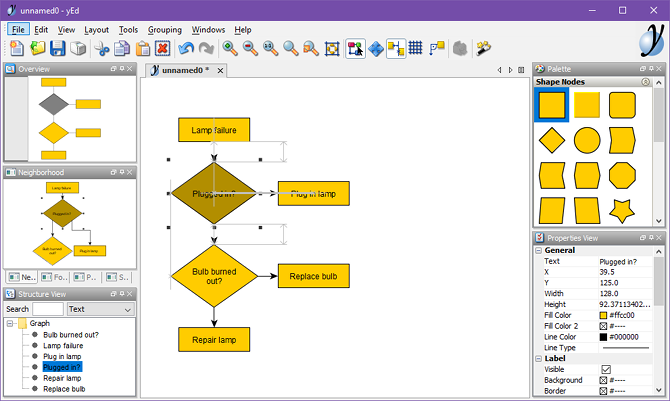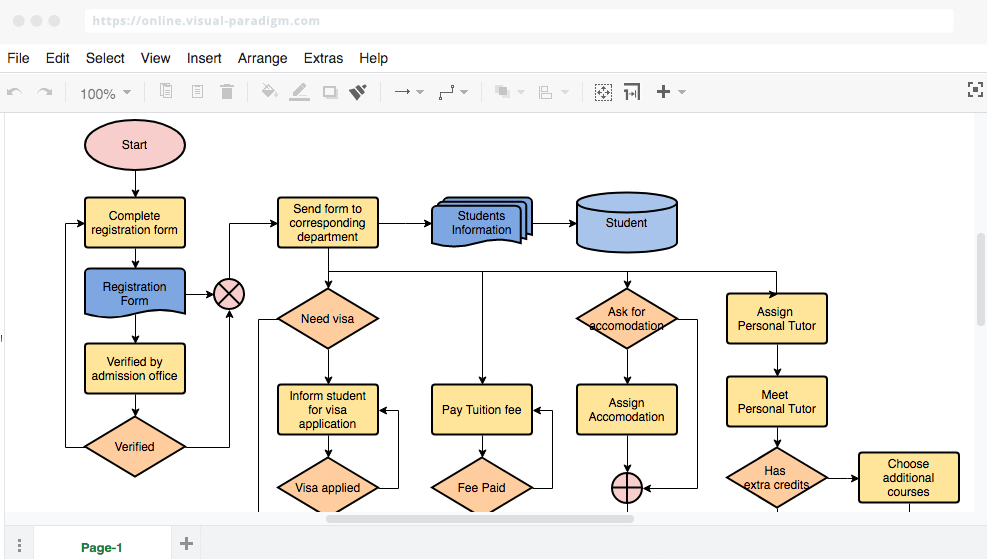
- #Flowcharter free install#
- #Flowcharter free code#
# example-conds-align.py if cond1 : op1 if cond2 : op2 if cond3 : op3 op_end
#Flowcharter free code#
Improve the flowchart of consecutive If statements converted from python code with the new feature of v0.2.0. flowchart ()) # SH $ python3 -m pyflowchart -no-simplify example_simplify.py from_code ( example_simplify_py, field = "", inner = True, simplify = False ) print ( flowchart. flowchart ()) # SH $ python3 -m pyflowchart example_simplify.pyįlowchart = Flowchart. from_code ( example_simplify_py, field = "", inner = True ) print ( flowchart. Simplify is for If & Loop statements: simplify the one-line-body.įor example: # example_simplify.py a = 1 if a = 1 : print ( a ) while a < 4 : a = a + 1įlowchart = Flowchart. So, if inner=True, pyflowchart will look into the field, otherwise, it takes the field as a node.įor CLI, adding an argument -i means inner=True, else inner=False. Techly, inner=True means parsing field.body, while inner=False parses. from_code ( code, field = '', inner = False ) print ( fc. To generate a flowchart of : # Python from pyflowchart import Flowchart with open ( 'example.py' ) as f : code = f. buzz ( foo ) print ( "end" )įor example.py above, available paths are: - "" (means the whole code) # example.py print ( "start" ) def foo (): foo = "foo" class Bar (): def buzz ( self, f ): def g ( self ): print ( "g" ) f ( self ) return g ( self ) Bar (). a function) you want to draw a flowchart.
conds_align: bool: improve the flowchart of consecutive If statements converted from python code. simplify: bool: for If & Loop statements: simplify the one-line-body or not.  inner: bool: True to parse the body of field whereas False to parse the body as a single object. field: str: Specify a field of code to generate a flowchart. PyFlowchart CLI is a 1:1 interface for this function: python3 -m pyflowchart code_file from_code ( code, field = "", inner = True, simplify = True, conds_align = False ) flowchart ()) # output flowchart code.Īs mentioned above, we use om_code to translate Python codes into Flowcharts. Or, in Python > from pyflowchart import Flowchart > with open ( 'simple.py' ) as f. Run PyFlowchart in CLI to generate flowchart code: $ python3 -m pyflowchart simple.py PyFlowchart can also translate your Python Codes into Flowcharts.įor example, you got a simple.py: def foo ( a, b ): if a : print ( "a" ) else : for i in range ( 3 ): print ( "b" ) return a + b The generated flowchart will look like: cond(align-next=no)=>condition: Yes or No? This usually works with a connect_direction customization: cond. no_align_next () # or do this at _init_: cond = ConditionNode ( "a cond node", align_next = False ) (See also adrai/flowchart.js#node-specific-specifiers-by-type)Īnd for convenience, there are grammar sugars to set param align-next=no for ConditionNodes: cond = ConditionNode ( "a cond node" ) cond. Since v0.2.0, we support a t_param(key, value) method to generate flowchart like this: element(param1=value1,param2=value2)=>start: Start And if you prefer CLI, see francoislaberge/diagrams. Many Markdown editors (for example, Typora) support this flowchart syntax, too (reference: Typora doc about flowchart). Then you can visit and translate the generated textual representation into SVG flow chart diagrams: connect ( e ) fc = Flowchart ( st ) print ( fc. connect ( op, "right" ) # sub->op line starts from the right of sub io. OUTPUT, 'something.' ) sub = SubroutineNode ( 'A Subroutine' ) e = EndNode ( 'a_pyflow_test' ) st. Get a Flowchart with your start node and call its flowchart() method to generate flowchart.js flowchart DSL: from pyflowchart import * st = StartNode ( 'a_pyflow_test' ) op = OperationNode ( 'do something' ) cond = ConditionNode ( 'Yes or No?' ) io = InputOutputNode ( InputOutputNode. An optional second parameter to connect() is used to specify the connect_direction. Nodes can be connected by connect() method ( connect_ for ConditionNode). PyFlowchart supports flowchart.js node types: PyFlowchart allows you to write a flowchart in Python which could be translated into the flowchart.js DSL automatically. Keep reading this document to learn more usages. 🎉 Now you are ready to enjoy the flowchartlization. $ python3 -m pyflowchart example.py -f thod_name To specify a function (or a method in a class) to flowchartlize: $ python3 -m pyflowchart example.py -f function_name Go to or use editors like Typora to turn the output code into a rendered diagram. PyFlowchart will output the generated flowchart.js DSL. To flowchartlize your python codes in example.py,run: $ python3 -m pyflowchart example.py
inner: bool: True to parse the body of field whereas False to parse the body as a single object. field: str: Specify a field of code to generate a flowchart. PyFlowchart CLI is a 1:1 interface for this function: python3 -m pyflowchart code_file from_code ( code, field = "", inner = True, simplify = True, conds_align = False ) flowchart ()) # output flowchart code.Īs mentioned above, we use om_code to translate Python codes into Flowcharts. Or, in Python > from pyflowchart import Flowchart > with open ( 'simple.py' ) as f. Run PyFlowchart in CLI to generate flowchart code: $ python3 -m pyflowchart simple.py PyFlowchart can also translate your Python Codes into Flowcharts.įor example, you got a simple.py: def foo ( a, b ): if a : print ( "a" ) else : for i in range ( 3 ): print ( "b" ) return a + b The generated flowchart will look like: cond(align-next=no)=>condition: Yes or No? This usually works with a connect_direction customization: cond. no_align_next () # or do this at _init_: cond = ConditionNode ( "a cond node", align_next = False ) (See also adrai/flowchart.js#node-specific-specifiers-by-type)Īnd for convenience, there are grammar sugars to set param align-next=no for ConditionNodes: cond = ConditionNode ( "a cond node" ) cond. Since v0.2.0, we support a t_param(key, value) method to generate flowchart like this: element(param1=value1,param2=value2)=>start: Start And if you prefer CLI, see francoislaberge/diagrams. Many Markdown editors (for example, Typora) support this flowchart syntax, too (reference: Typora doc about flowchart). Then you can visit and translate the generated textual representation into SVG flow chart diagrams: connect ( e ) fc = Flowchart ( st ) print ( fc. connect ( op, "right" ) # sub->op line starts from the right of sub io. OUTPUT, 'something.' ) sub = SubroutineNode ( 'A Subroutine' ) e = EndNode ( 'a_pyflow_test' ) st. Get a Flowchart with your start node and call its flowchart() method to generate flowchart.js flowchart DSL: from pyflowchart import * st = StartNode ( 'a_pyflow_test' ) op = OperationNode ( 'do something' ) cond = ConditionNode ( 'Yes or No?' ) io = InputOutputNode ( InputOutputNode. An optional second parameter to connect() is used to specify the connect_direction. Nodes can be connected by connect() method ( connect_ for ConditionNode). PyFlowchart supports flowchart.js node types: PyFlowchart allows you to write a flowchart in Python which could be translated into the flowchart.js DSL automatically. Keep reading this document to learn more usages. 🎉 Now you are ready to enjoy the flowchartlization. $ python3 -m pyflowchart example.py -f thod_name To specify a function (or a method in a class) to flowchartlize: $ python3 -m pyflowchart example.py -f function_name Go to or use editors like Typora to turn the output code into a rendered diagram. PyFlowchart will output the generated flowchart.js DSL. To flowchartlize your python codes in example.py,run: $ python3 -m pyflowchart example.py #Flowcharter free install#
Get PyFlowchart $ pip3 install pyflowchart It's easy to convert these flowcharts text into a picture via flowchart.js.org, francoislaberge/diagrams, or some markdown editors. PyFlowchart produces flowcharts in flowchart.js flowchart DSL, a widely used flow chart textual representation.
 translate Python source codes into flowcharts.
translate Python source codes into flowcharts. 
write flowcharts in the Python language,.







 0 kommentar(er)
0 kommentar(er)
